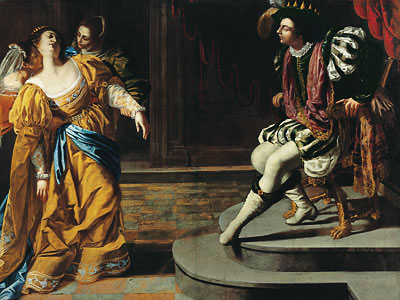Life Savings

Esther before Ahasuerus, 1628–35. Artemisia Gentileschi (Italian [Roman], 1593–1651/53).
The repeated structures in the Bible allow us to fill in some of the gaps. Although it can’t be proved from Genesis 1-3 that Adam and Eve would have been given robes if they had obeyed, the event is repeated many times throughout the Bible and there are robes of office for the obedient.1
Similarly, the event is repeated in the book of Esther. Without a Jewish king, the role of the restored Israel was that of a priesthood of all Jews within the “Tabernacle” of the empire. So Mordecai’s failure, in advising Esther to hide her identity, epitomises the failure of Israel even at this early stage in this era.
Enter the snake, Haman.
Of course, Mordecai rights his wrong and asks her to expose who she is. Her obedient witness will break the word of the serpent.2
“Do not think in your heart that you will escape in the king’s palace any more than all the other Jews. For if you remain completely silent at this time, relief and deliverance will arise for the Jews from another place, but you and your father’s house will perish.” Esther 4:13-14
Faced with a choice like that given to Shadrach and his friends, Esther obeyed. And I think as this pattern is repeated, it allows us to trace the words of Christ right back to Eden. Their context is witness, particularly in the first century as the Restoration era was drawing to a close. He was Mordecai commanding Esther, Moses commanding Israel, Adam commanding greater Eve.
“For whoever desires to save his life will lose it, but whoever loses his life for My sake and the gospel’s will save it.” Mark 8:35
Esther’s risk led to a victory from India to Ethiopia, and Revelation 20 alludes to it to describe the end of the gospel age — a world victory.
______________
1 See James B. Jordan, The Dominion Trap.
2 See also Jordan’s lectures on Esther, Witness or Perish, at www.wordmp3.com

























